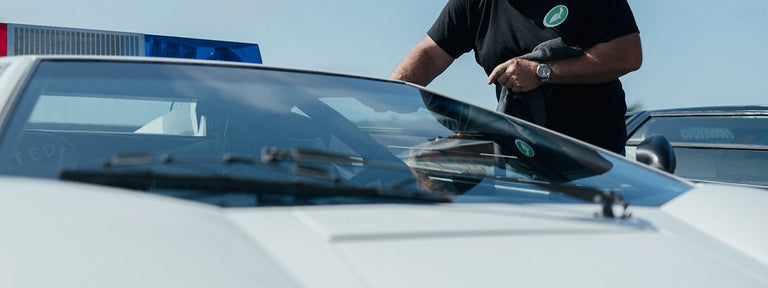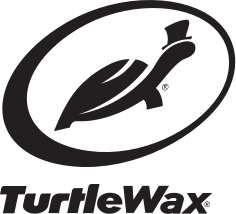
FREE DELIVERY ON ORDERS OVER $15
THOUSANDS OF 5-STAR REVIEWS
BUY ONE GET ONE FREE ON SELECTED HYBRID SOLUTION PRO ITEMS
-
Exterior
-
Interior
-
Hybrid Solutions
Featured
- MISTER CARTOON
-
Kits
Featured
- Accessories
- Learn
- Rewards
-
Product Finder
What Are You Working On Today?
- Home
-
Exterior
- Buy One Get One Free Deals
- New
- Best Sellers
- Problem Solvers
-
Wash
- waterless
- wash & wax one steps
- extreme foam
- heavy duty cleaners
- ph neutral car wash
- exterior car glass cleaner spray
- View all Wash
- Wax, Seal & Coat
- Paint Correct
-
Restore
- headlight restoration
- restore scratch repair
- trim restoration
- bug & tar
- metal & chrome finish
- View all Restore
- Wheel & Tire
- View all Exterior
-
Interior
- Buy One Get One Free Deals
- New
- Best Sellers
- Cleaners
- Carpet, Mats & Upholstery
-
Leather Care
- leather cleaner & conditioner
- best car interior cleaning products for leather-vinyl-rubber
- View all Leather Care
- Odor Elimination
- View all Interior
-
Hybrid Solutions
- Buy 1 Get 1 Free
- New
- Best Sellers
- Ceramic
- Graphene
- Interior
- Hybrid Solutions Pro
- View all Hybrid Solutions
-
Mister Cartoon
- Mister Cartoon Air Care & Foggers
- Mister Cartoon Wash, Wax & Detailer
- Mister Cartoon Interior, LVP & Protectant
- Mister Cartoon Wheel & Tire
- View all Mister Cartoon
-
Car Care Kits
- New
- Best Sellers
- Vehicle Detailing Kits
- Exterior Kits
- Interior Kits
- Hybrid Solutions Kits
- View all Car Care Kits
-
Accessories
- New
- Best Sellers
- Wax application
- Exterior Accessories
- Interior Accessories
- Buckets
- Cutting Pads
- Towels
- Sponges & Mitts
- Apparel
- View all Accessories
- Rewards
- Learn
- Product Finder
FREE DELIVERY ON ORDERS OVER $15
THOUSANDS OF 5-STAR REVIEWS
BUY ONE GET ONE FREE ON SELECTED HYBRID SOLUTION PRO ITEMS

How To Remove Scratches From A Car Window
In this article, you will learn:
- How the physical properties of glass can damage your wiper blades
- How to use car wash soap, a clay bar and rubbing compound to deep clean your glass
- How to remove scratches from a car window from marring, smearing and mineral deposits.
When you work for a company that makes car restoration products, you get all kinds of car questions from customers, friends, family…everyone! One of the most popular questions is how to get rid of scratches on windshields.
Unfortunately, that’s a problem most amateur detailers cannot resolve themselves. If you have a cracked, chipped or scratched area on your windshield, your best bet will be to take your car to a reputable auto glass repair shop. Unless you need a complete windshield replacement, a shop can repair scratches like these quickly, easily and affordably. They may even be covered by your insurance!
Now, if your car windows are marred from old wiper blades, if they have stubborn smears or if mineral deposits have left the glass looking etched, we can help with products and tips to get those problems fixed. Let’s dig in!
Smooth as glass?
If you run your finger across the surface of your windshield, the glass will feel smooth. In fact, the expression “smooth as glass” makes it sound like glass should be the measuring stick for a smooth, non-porous surface. But that’s not really the case. At the microscopic level, glass isn’t smooth at all. It has a crystalline structure that’s riddled with hard, sharp edges. Over time, tiny particles, like the minerals in rainwater, can catch on these angles and embed themselves between the crystals, leaving your glass with an etched appearance.
These edges can also wear away at rubber or silicon wiper blades as they pass over your windshield time and time again, embedding bits of wiper blade material in the glass.
And, if you’ve ever left your wipers running once the rain stops and you hear a chatter and see your wipers skipping, that’s the wiper blades, without the lubricating action of water, catching on those crystalline angles. When this happens, your wiper blades can mar your windshield, leaving long, arcing smears across the glass. You know the look. You’ve seen it.
So how do you get these stubborn deposits, mars and smears off your glass? Depending on the severity of the issue, you have a few different options, and – good news – all of them are relatively fast and simple.
Option 1: Concentrated Car Wash Soap
When cleaning your car, it’s always best to start with the gentlest method first. In the case of glass, that means starting with a solution of car wash soap, water and a good-quality microfiber wash mitt. You’ll want to mix your solution stronger than you would for an ordinary car wash. We formulated our M.A.X. Power Car Wash for exactly this type of adaptable usage. Used at its highest concentration, it will power away most smears and stains on glass with ease.
Simply wet your glass with a hose, scrub it with your soapy wash mitt, rinse clean and check your work. That may be all it takes!

Option 2: Detailing Clay
If your glass isn’t crystal clear after scrubbing it with a car wash solution, break out some detailing clay and a lubricating spray. These synthetic clays are remarkably good at removing embedded contaminants from your glass just like they do with your clear coat! Spray a 1’ x 1’ area of the glass with lubricant and wipe back and forth with the clay. Continue this process until you’ve cleaned the entire window. Follow that up with a glass cleaner, like In & Out Fine Mist Glass Cleaner, and a clean microfiber cloth and check your work.
If you STILL have stubborn smears or embedded materials, it’s time to break out the big guns.

Option 3: Polishing or Rubbing Compound
Most people would never think about using a compound on their glass. Some might even worry abrasives like these could scratch or damage glass, but never fear.
Polishing and rubbing compounds were formulated to be safe for use on clear coat and paint. The glass in your windshield and car windows is many times harder than clear coat, so there’s no need to worry. The only things they’ll abrade away are the soils, smears and deposits you want to remove.
Using a foam applicator by hand or a dual-action machine polisher, apply the polishing or rubbing compound across the glass just as you would on the painted surfaces of your car. Follow the package instructions for the compound and best practices for your DA polisher if you’re using a machine.
Wipe away all the residual compound with a clean microfiber towel and clean the entire glass surface with a fresh, clean microfiber cloth and an automotive glass cleaner like In & Out Fine Mist Glass Cleaner or Dash & Glass Interior Detailer.

Stop the smears before they start
There’s one last, quick thing you can do to help prevent future mineral deposits, marring and smearing on your glass. Apply a spray wax to the outside of all your car’s glass. Spray waxes are crystal clear, so they won’t impede your vision or alter the clarity of the glass. In fact, a layer of wax will not only help prevent future buildups on your glass for better clarity, but it will also help shed water during rainstorms, improving your safety.


Max Power Car Wash
- Three levels of cleaning power from moderate to extreme for the wash best suited to your needs
- Removes stains, tar, tree sap and even old wax to prep and restore tired surfaces
- Fragrance-infused formula creates a pleasant atmosphere for a refreshing car care routine
Turtle WaxMax Power Car Wash
100.0 fl oz
- Adjustable Strength: User Control
- Enough for Over 20 Washes
- Eliminates Toughest Dirt and Grime

Premium Grade Polishing Compound
- Removes light scratches, swirls, hazy oxidation and fading
- Leaves a high-gloss shine
- Fine polishing agents improve the clarity of your paint
- Safe for clear coat and silicone-free
Turtle WaxPremium Grade Polishing Compound
18.0 fl oz
- Removes light scratches, swirls and fade
- Safe for Clear Coat
- Use by Hand or with Polishing Machine

Dash & Glass Interior Detailer
- One-step cleaning for all washable interior surfaces
- Sparkling, streak-free cleaning for glass, instruments, touchscreens, plastics and more
- Clearvue Technology delivers dust-free, non-greasy, zero-residue cleaning
- UV protectant shields all cleaned surfaces from the sun’s rays
Turtle WaxDash & Glass Interior Detailer
23.0 fl oz
- 2-in-1 Cleaner for Glass and Dash
- No Residue, Streak-free Shine
- Simply Spray and Wipe

Max Power Car Wash
- Three levels of cleaning power from moderate to extreme for the wash best suited to your needs
- Removes stains, tar, tree sap and even old wax to prep and restore tired surfaces
- Fragrance-infused formula creates a pleasant atmosphere for a refreshing car care routine

Premium Grade Polishing Compound
- Removes light scratches, swirls, hazy oxidation and fading
- Leaves a high-gloss shine
- Fine polishing agents improve the clarity of your paint
- Safe for clear coat and silicone-free

Dash & Glass Interior Detailer
- One-step cleaning for all washable interior surfaces
- Sparkling, streak-free cleaning for glass, instruments, touchscreens, plastics and more
- Clearvue Technology delivers dust-free, non-greasy, zero-residue cleaning
- UV protectant shields all cleaned surfaces from the sun’s rays
WANT MORE TURTLE WAX?
Subscribe for your newsletter and the rewards will be in your inbox before you even get there
Latest
News, events and insights from Turtle Wax® worldwide
Offers
Exclusive offers and discounts on Turtle Wax® products
Rewards
Regular treats and surprises for all subscribers
Thanks! You should receive a confirmation email shortly.

